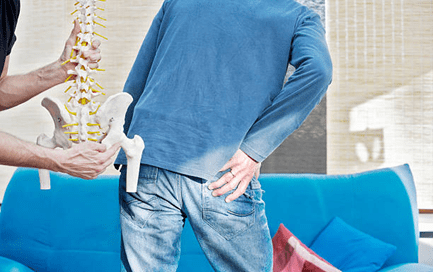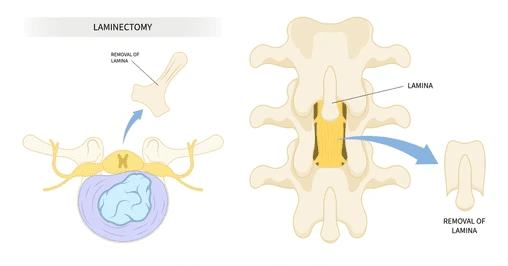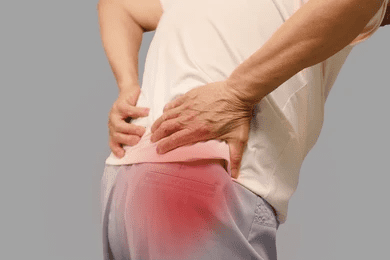Laminectomy is a common spinal procedure performed to alleviate nerve pressure by removing the back part of one or more vertebrae. This procedure, often recommended for spinal stenosis, can significantly relieve back pain and improve mobility. However, some patients experience persistent or even new types of pain, such as hip pain after laminectomy. This pain can be distressing, especially when it interferes with daily activities and quality of life.
Dr. Gurneet Singh Sawhney, one of the best neurosurgeon in Mumbai, India, explains, “Post-laminectomy hip pain can stem from compensatory issues as the body adapts to new spinal dynamics. It is often temporary and manageable but requires proper diagnosis to ensure effective treatment and recovery.”
With over 18 years of experience, Dr. Gurneet Singh Sawhney is recognized for his expertise in advanced, minimally invasive spine and neurosurgical techniques. He offers comprehensive care for complex spinal and neurological conditions, providing individualized guidance to ensure optimal recovery.
Connection Between Hip & Laminectomy Surgery
The connection between the hip and laminectomy surgery primarily relates to how the spine, nerves, and surrounding structures affect each other. A lumbar laminectomy removes part of the vertebra to relieve pressure on the spinal nerves, often addressing symptoms like lower back pain, sciatica, or numbness in the legs. However, the spine and hip are closely linked, so changes to the spine’s structure or posture after surgery can also affect the hips.

Why Do My Hips Hurt After Laminectomy? And How Long Does Hip Pain Last After Laminectomy?

For many, the pain is temporary. However, if it persists or intensifies, it could indicate muscle imbalances or residual nerve irritation from the surgery. Working with a specialist to assess movement patterns can provide insight into these persistent pains and aid in finding effective recovery methods.
Symptoms of Hip Pain After Laminectomy
- Sharp or Dull Pain: Discomfort may vary from sharp pains to a dull ache around the hip and lower back.
- Stiffness: Many patients report stiffness that makes movement difficult, especially after prolonged sitting or standing.
- Radiating Pain: Pain radiating from the lower back down to the hips is common in post-laminectomy cases.
- Numbness or Tingling: Some experience numbness or tingling, affecting balance and mobility.
- Difficulty in Walking: Hip pain can lead to challenges with walking, as the strain may worsen with activity

When to Seek Medical Attention
Diagnosing a frontoparietal hematoma requires comprehensive clinical evaluation and imaging tests:
Persistent Pain: If hip pain persists beyond a few weeks post-surgery, consulting a specialist is advisable.
Increased Discomfort: Worsening pain could signal complications requiring medical intervention.
Limited Mobility: If pain impacts daily movement or restricts walking, it may require treatment.

Associated Symptoms: Signs like fever, redness, or swelling may indicate infection and need immediate care.
Weakness or Instability: Weakness in the legs or hips following laminectomy should be evaluated by an expert.
Diagnosing Hip Pain After Laminectomy
Physical Examination: Assessing hip movement, gait, and muscle strength to identify sources of pain.
Imaging Tests: X-rays, MRIs, or CT scans to check for structural issues, nerve impingement, or alignment problems.
Nerve Studies: EMG and nerve conduction tests to detect nerve damage or irritation causing hip pain.
Patient History: Reviewing surgery details and recovery progress to pinpoint potential complications or posture-related issues.
Pain Localization: Identifying specific areas of discomfort to help distinguish between muscular and nerve-related causes.
These methods together help identify the root cause of post-laminectomy hip pain.
How to Relieve Hip Pain After Laminectomy
Relieving hip pain after laminectomy can involve several strategies:
Physical Therapy: Targeted exercises to strengthen hip, core, and lower back muscles, helping improve posture and relieve pain.
Medication: Pain relievers and anti-inflammatory drugs can reduce discomfort and swelling in the hip area post-surgery.
Nerve Blocks or Injections: Corticosteroid or nerve-block injections to manage inflammation and provide temporary pain relief.
Hot and Cold Therapy: Alternating hot and cold packs on the hip area to alleviate muscle soreness and inflammation.
Stretching and Mobility Exercises: Gentle stretching to improve flexibility, reduce stiffness, and support hip function.
Lifestyle Adjustments: Weight management and low-impact activities, like swimming, to reduce strain on the hips and spine.
Alternative Therapies: Acupuncture or massage therapy may offer additional pain relief and relaxation for hip discomfort.
Surgical Revision: In rare cases where non-surgical methods fail, additional surgery may be recommended for structural issues.
Conclusion
Recovering from hip pain after laminectomy requires a structured approach and expert guidance. Dr. Gurneet Singh Sawhney, considered one of the best neurosurgeons in India, offers evidence-based care that addresses pain while promoting optimal recovery. With his extensive knowledge, patients gain a comprehensive understanding of managing hip pain and can look forward to improved function and comfort.
FAQ
1. What are the signs of a failed laminectomy?
2. How can I speed up my hip recovery after laminectomy?
Speeding up hip recovery may involve:
- Following a gentle exercise program.
- Maintaining proper posture.
- Adhering to post-surgery guidelines.
Consulting a professional can also help tailor the recovery plan to individual needs.
3. What treatments are available for hip pain after laminectomy?
4. Can physical therapy help with hip pain post-laminectomy?
Physical therapy can significantly help by strengthening surrounding muscles, improving flexibility, and reducing stress on the hip and lower back.
5. Is there a risk of developing chronic pain after laminectomy?
Reference links:
https://painspecialistsaustralia.com.au/post-laminectomy-syndrome
https://www.healthline.com/health/post-laminectomy-syndrome
Disclaimer: This page is for informational purposes and not for promotional use.
